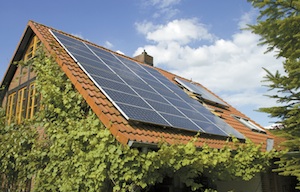 When my husband and I bought a 1922 Craftsman a year ago, we started making changes that would transform it into a sustainable home.
When my husband and I bought a 1922 Craftsman a year ago, we started making changes that would transform it into a sustainable home.
First we were careful about the paint we used. We chose safe, no-VOC paintt, that is, paint without volatile organic compounds, carbon-based chemicals bad for human health. Every hardware chain carries better paints in a million colors, just read the label. It’s the same price as
the stinky stuff that warns you to use in a well-ventilated room and off-gasses for weeks.
Next we took steps to make the house more energy efficient. We added door sweeps; weather stripping around doors, under window sashes and the attic hatch; gasket insulation behind outlets and switch plates; caulking around pipes as they enter walls; and checked the fireplace
damper. These steps were easy to do using nothing more complicated than a screwdriver and caulking gun.
We also bought thermal lined drapes, available wherever drapes are sold. The potential energy savings from reducing drafts in a home ranges from 5% to 30%. This saves money on heating and cooling bills. For $20 we got a water heater insulation blanket, saving more on heating water.
Then we tackled our electricity use. We put a six-outlet power strip ($4) between the wall and our TV accessories (leaving the TIVO connected to record shows). This takes away the phantom electrical draw of TV, DVD and our Playstation. Then we did the same for computers, printer, scanner, speakers, and again in the kitchen with microwave, toaster, etc.
We set our thermostat to low so we wouldn’t be wasting air-conditioning when we’re not home or have the house heating up at night. The heater is set to go off a half hour after we go to bed and before we wake. It was easy to find the instructions to this thermostat online.
All these were cheap and easy and can be done in a single weekend. We also invested more in our home by buying a front-loading high-efficiency washing machine. It spins so much water out of the laundry that a clothes line in the back yard works fine — no dryer needed.
In the kitchen, we chose a top freezer refrigerator. It’s most efficient because cold sinks. We bought nontoxic shredded denim attic insulation; you don’t need to bring toxins
in your home to insulate your house. Because it wasn’t fiberglass, we were able to spend a very dirty weekend cutting and rolling that out.
After improving energy efficiency, we made the big leap of having solar panels installed on our roof. Obviously, conserving energy and water is cheaper than creating solar power or desalinating water.
Join the Sierra Club's solar revolution! Click here to learn how to go solar with partner Sungevity.